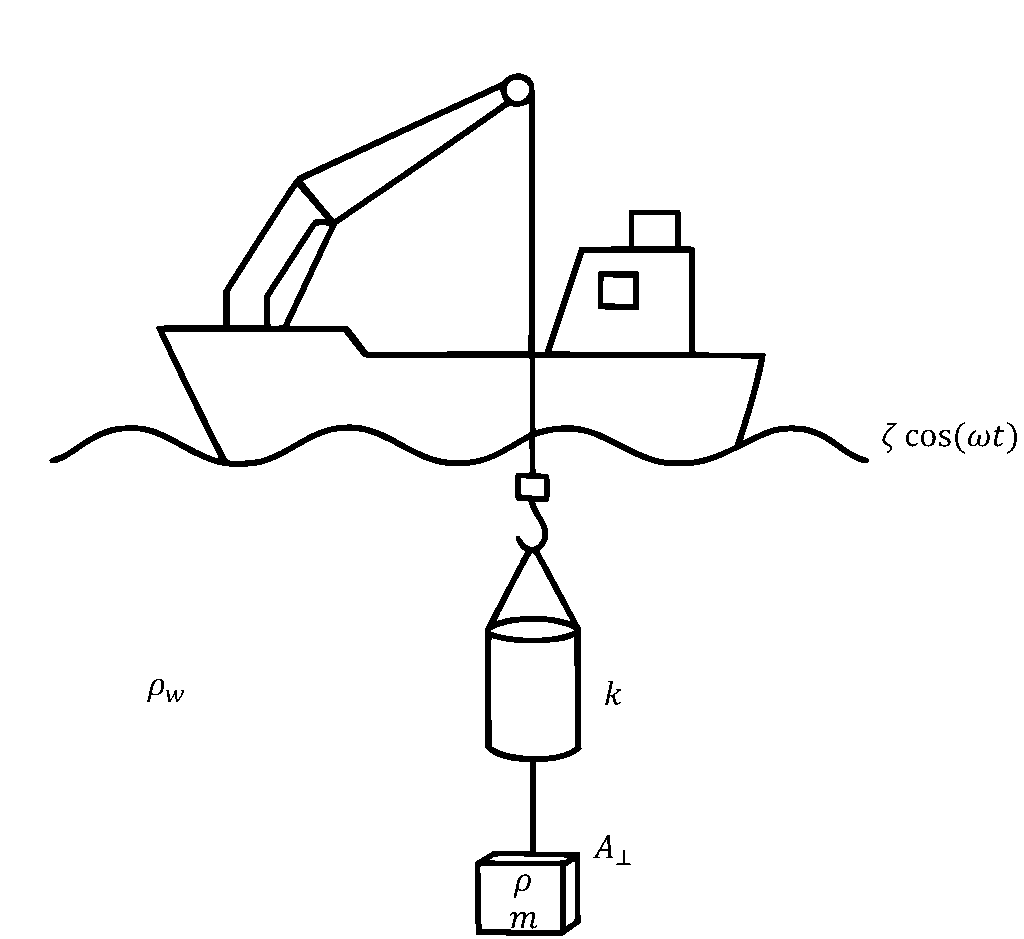Passive Heave Compensation
Basic concept
Heave means vertical motion, in our context vertical motion of the crane hook, caused by waves. Passive heave compensation can be thought of as a spring-mass-damper system with the objective of reducing wave induced motion below the compensator. The below simplified sketch illustrates our scenario:

The crane hook motion follows the sinusoidal given by \( \zeta \cos(\omega t) \), the PHC has stiffness \( k \), the water has mass density \( \rho_w \), while the payload has basic properties \( \rho, m, A_\perp \), respectively for payload mass density, mass and area perpendicular to the heave motion.
- Shock absorbers, like Polaris, are unmatched when it comes to shock absorption, but they are useless for other applications as the spring component is effectively missing.
- Basic passive heave compensators, like Rigel, has generally a lower gas to oil ratio than an adaptive PHC which gives lower performance.
- Adaptive passive heave compensators, like Antares, are the best allrounders, they can do almost everything reasonably well, except for motion compensation in air or subsea motion compensation under unfavorable conditions
- Topside active heave compensators, cannot do subsea applications as they not designed to be submerged.
- Active heave compensators are not well suited for “fast” applications such as shock absorption and gives generally worse performance than a passive heave compensator when operated in passive mode due to higher weight and friction.
What is the relative cost between the products?
| Product | Relative Cost |
|---|---|
| Shock absorber | 1x |
| Basic PHC | 2–3x |
| Adaptive PHC | 3–6x |
| Topside AHC | 10–20x |
| Subsea AHC | 15–30x |
Legend
Lowest cost
Low-medium cost
Medium-high cost
Highest cost
Lowest cost
Low-medium cost
Medium-high cost
Highest cost
The relative cost is relative to a shock absorber cost (with similar capacity/stroke) and can be considered a rough indicator.
How do the products rank in terms of reliability?
- Shock absorber
- Passive heave compensator
- Adaptive passive heave compensator
- Topside active heave compensator
- Subsea active heave compensator
Where shock absorber is the most reliable.
